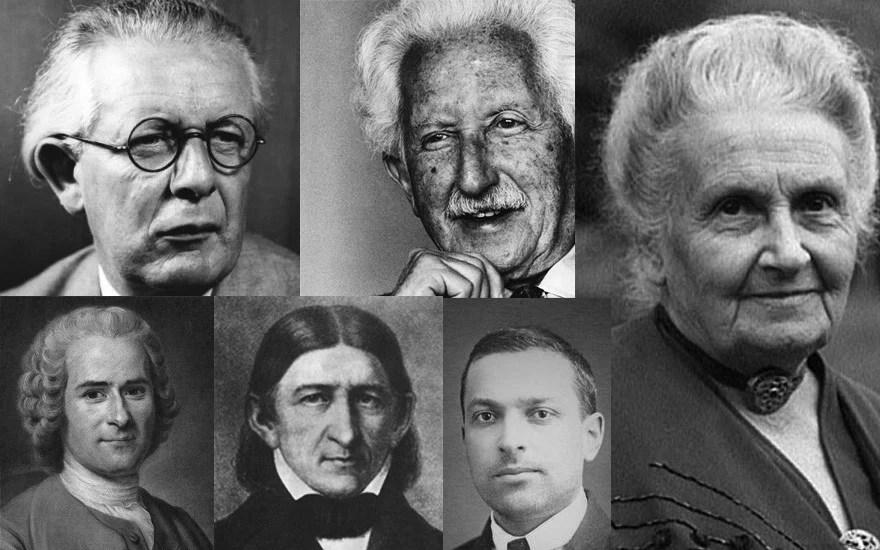As a mum and teacher, I often get asked about different learning approaches, especially Montessori. It’s a popular method, and for good reason. Maria Montessori believed children learn best through independence, hands-on experiences, and a calm, prepared environment. You will see this influence in many early learning settings today. Think wooden toys, child-sized tools, and real-life tasks like pouring water or sweeping.
But here’s the key: Montessori is just one of many theorists that help shape how we support young children under the Australian Early Years Learning Framework (EYLF). The EYLF isn’t based on one single theory. Instead, it draws from a range of theorists to reflect the many ways children learn. Alongside Montessori, it includes:
Vygotsky, who focused on social learning and the importance of language and interaction.
Piaget, who looked at how children build knowledge in stages.
Bronfenbrenner, who considered how a child’s environment and relationships affect development.
Erikson, who explored emotional and social development across ages.
Each theory adds something valuable. Montessori gives us tools for independence and focus. Vygotsky reminds us how powerful conversations and relationships are. Piaget helps us understand how children construct knowledge through active exploration, while Erikson highlights the importance of emotional security and identity at every stage. The EYLF brings these together, helping educators and parents respond to the whole child, not just one part of their development.
So yes, Montessori inspired play is wonderful, but it’s just one piece of a much bigger puzzle. At the end of the day, the goal of the EYLF is simple: to help children grow into confident, capable, and curious learners. And as parents and educators, we get to use a rich blend of ideas to help them get there.

مونتيسوري – واحدة من عدة نظريات في إطار التعلم المبكر الأسترالي (EYLF)
كأم ومعلمة، كثيرًا ما يُطرح عليّ سؤال حول مناهج التعلم المختلفة، وخاصة منهج مونتيسوري. إنه أسلوب شائع وله مبررات قوية. فقد كانت ماريا مونتيسوري تؤمن بأن الأطفال يتعلمون بشكل أفضل من خلال الاستقلالية، والتجارب العملية، وبيئة هادئة ومُعدة بعناية. ويمكنك ملاحظة هذا التأثير في العديد من بيئات التعلم المبكر اليوم — فكّر في الألعاب الخشبية، والأدوات بحجم الأطفال، والمهام الواقعية مثل سكب الماء أو الكنس.
لكن الأهم هنا هو أن: مونتيسوري ليست النظرية الوحيدة التي تشكّل الطريقة التي ندعم بها الأطفال الصغار في إطار التعلم المبكر الأسترالي (EYLF). فالإطار لا يستند إلى نظرية واحدة فقط، بل يستمد قوته من مجموعة من المنظرين ليعكس الطرق المتنوعة التي يتعلم بها الأطفال. إلى جانب مونتيسوري، يشمل الإطار:
- فيجوتسكي، الذي ركز على التعلم الاجتماعي وأهمية اللغة والتفاعل.
- بياجيه، الذي تناول كيف يبني الأطفال المعرفة من خلال مراحل محددة.
- برونفنبرينر، الذي نظر في كيفية تأثير البيئة والعلاقات المحيطة بالطفل على نموه.
- إريكسون، الذي درس التطور الاجتماعي والعاطفي خلال مراحل العمر المختلفة.
كل نظرية تقدم شيئًا ثمينًا. مونتيسوري تقدم أدوات للاستقلال والتركيز. فيجوتسكي يذكرنا بقوة الحوار والعلاقات الاجتماعية. بياجيه يساعدنا في فهم كيف يبني الأطفال المعرفة من خلال الاستكشاف النشط، بينما يسلط إريكسون الضوء على أهمية الأمن العاطفي وتكوين الهوية في كل مرحلة عمرية. يجمع إطار EYLF هذه الرؤى، ليساعد المربين والآباء في الاستجابة لطفل متكامل، وليس جانبًا واحدًا فقط من تطوره.
لذا، نعم، اللعب المستوحى من مونتيسوري رائع، لكنه مجرد جزء من صورة أكبر بكثير. في نهاية المطاف، الهدف من إطار EYLF بسيط: مساعدة الأطفال على النمو ليصبحوا متعلمين واثقين، قادرين، وفضوليين. وكمربين وآباء، نحظى بفرصة استخدام مزيج غني من الأفكار لمساعدتهم على الوصول إلى ذلك.


